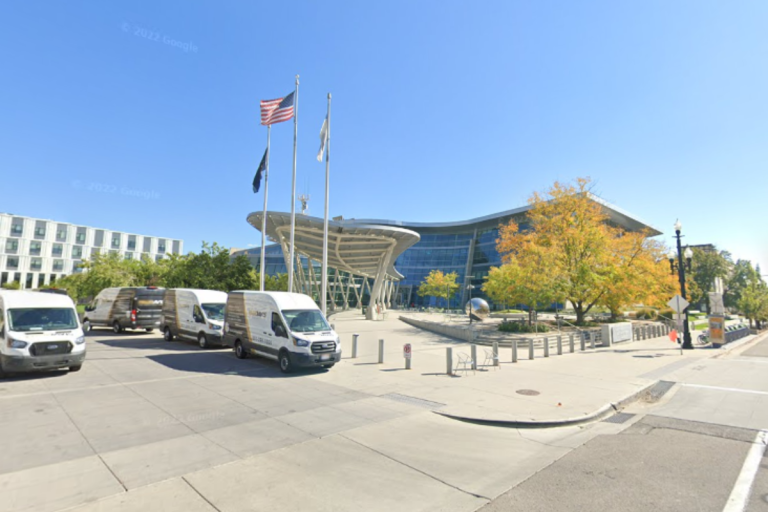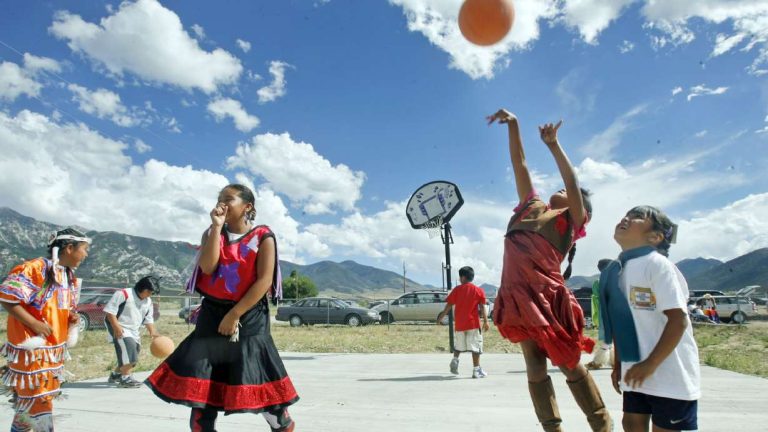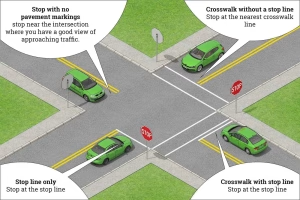Understanding right-of-way rules is essential for drivers, pedestrians, and cyclists navigating Nashville’s roads. These rules help prevent accidents and ensure smooth traffic flow. Whether driving through busy downtown streets, residential neighborhoods, or highways, knowing who has the right of way in different scenarios can keep you and others safe.
1. Uncontrolled Intersections
An uncontrolled intersection is one without traffic lights or stop signs. In these cases:
- Yield to the right: If two vehicles arrive at an intersection simultaneously, the driver on the left must yield to the driver on the right.
- Yield to vehicles already in the intersection: If a vehicle has entered the intersection before you, it has the right of way.
2. Stop Signs and Four-Way Stops
At four-way stops, the right-of-way rules are as follows:
- First come, first served: The first vehicle to stop at the intersection has the right of way.
- Yield to the right: If two vehicles arrive at the same time, the driver on the left must yield to the driver on the right.
- Straight before turning: If two vehicles arrive at the same time, and one is turning while the other is going straight, the vehicle going straight has the right of way.
3. Traffic Signals
Traffic lights dictate right of way, but there are special cases:
- Green light: You may proceed, but yield to pedestrians in crosswalks and vehicles still in the intersection.
- Yellow light: Slow down and prepare to stop unless you’re too close to safely stop.
- Red light: Stop completely. Right turns on red are allowed unless posted otherwise, but you must yield to pedestrians and other vehicles before turning.
4. Yield Signs
At yield signs:
- Slow down and check for oncoming traffic: You may proceed if the way is clear.
- Yield to cross traffic: If other vehicles are approaching, stop and let them pass before proceeding.
5. Pedestrian Crosswalks
Nashville enforces strict pedestrian safety laws:
- Marked crosswalks: Drivers must stop for pedestrians in marked crosswalks.
- Unmarked crosswalks: At intersections without marked crosswalks, pedestrians still have the right of way.
- Mid-block crossings: Pedestrians should yield to traffic unless they are at a marked crosswalk.
- School zones: Drivers must always yield to children crossing the street.
6. Merging Lanes and Highways
When merging onto highways or interstates:
- Yield to traffic on the highway: Vehicles already on the highway have the right of way.
- Adjust your speed: Match the speed of highway traffic to merge safely.
- Zipper merge: In heavy traffic, the “zipper merge” technique (taking turns merging) is recommended.
7. Left Turns
Turning left requires caution and yielding:
- Yield to oncoming traffic: Vehicles turning left must yield to those going straight or turning right.
- Yield to pedestrians: Check crosswalks before turning.
8. Right Turns
Right-turning vehicles must:
- Yield to pedestrians: If a pedestrian is crossing in the same direction, you must wait.
- Yield to cross traffic: Ensure no vehicles are approaching from the left before turning.
9. Roundabouts
Roundabouts are becoming more common in Nashville, and they have specific right-of-way rules:
- Yield before entering: Traffic inside the roundabout has the right of way.
- Stay in your lane: Do not change lanes inside the roundabout.
- Signal when exiting: Use your turn signal to indicate when you’re leaving the roundabout.
10. Emergency Vehicles
When an emergency vehicle (ambulance, fire truck, or police car) is approaching with lights and sirens:
- Pull over to the right: Stop and allow the emergency vehicle to pass.
- Do not block intersections: If you’re in an intersection, continue through before pulling over.
11. School Buses
School bus safety is strictly enforced:
- Stop for flashing red lights: If a school bus has its stop sign extended and red lights flashing, all vehicles must stop.
- Divided highways: If the road has a physical barrier (such as a median), only traffic following the bus must stop.
12. Railroad Crossings
At railroad crossings:
- Trains always have the right of way: Never attempt to cross when a train is approaching.
- Stop if lights are flashing: If signals indicate a train is coming, stop until it has passed.
13. Driveways and Private Roads
When exiting a private driveway or parking lot:
- Yield to pedestrians: Pedestrians have the right of way on sidewalks.
- Yield to public road traffic: Vehicles on the main road have the right of way.
14. Parking Lot Rules
Parking lots can be confusing, but the general right-of-way rules are:
- Main lanes have priority: Vehicles in the main lanes of parking lots have the right of way over those leaving parking spaces.
- Yield to pedestrians: Always yield to pedestrians walking through the lot.
15. Funeral Processions
In Tennessee, funeral processions have special right-of-way privileges:
- Other vehicles must yield: Do not cut through a funeral procession.
- Do not pass: It is illegal to pass a funeral procession on a two-lane road.
16. Construction Zones
In road work zones:
- Follow posted signs: Yield to construction workers and equipment.
- Obey flaggers: If a worker directs you to stop, you must obey.
17. Bicyclists’ Right of Way
Cyclists share the road with vehicles:
- Treat bicycles as vehicles: Cyclists have the same rights and responsibilities as drivers.
- Yield when turning: Drivers must yield to bicyclists going straight before making a turn.
18. Motorcycles
Motorcycles follow the same right-of-way rules as cars, but drivers should take extra caution:
- Look twice at intersections: Motorcycles are harder to see, so always double-check before turning.
19. T-Intersections
At a T-intersection:
- Through traffic has the right of way: Vehicles on the road that continues without interruption have priority over those entering.
20. Nashville-Specific Considerations
Nashville’s traffic congestion and urban layout mean drivers must be extra cautious:
- Tourist-heavy areas: Broadway, The Gulch, and Downtown Nashville often have high pedestrian traffic, requiring extra vigilance.
- Interstate interchanges: I-24, I-40, and I-65 can be confusing; always follow signage and right-of-way rules carefully.
- Event traffic: During concerts or sports events, police officers may direct traffic; always follow their instructions.
Conclusion
Knowing and following right-of-way rules in Nashville is essential for safe driving. Whether you’re a resident or a visitor, respecting these guidelines ensures smoother traffic flow and reduces accidents. By yielding when necessary and staying aware of other road users, you contribute to a safer environment for everyone.
Disclaimer – Our editorial team has thoroughly fact-checked this article to ensure its accuracy and eliminate any potential misinformation. We are dedicated to upholding the highest standards of integrity in our content.

























+ There are no comments
Add yours